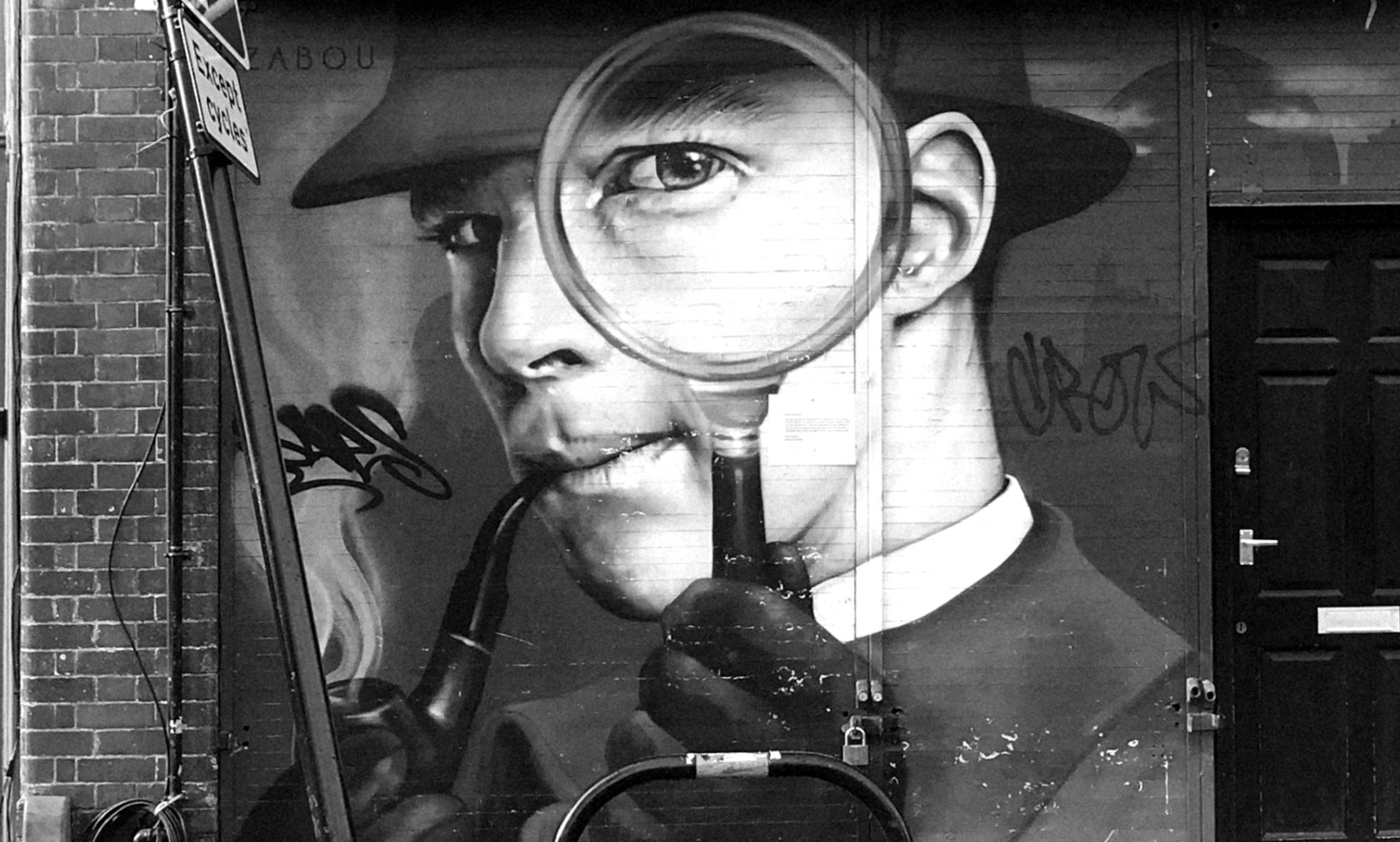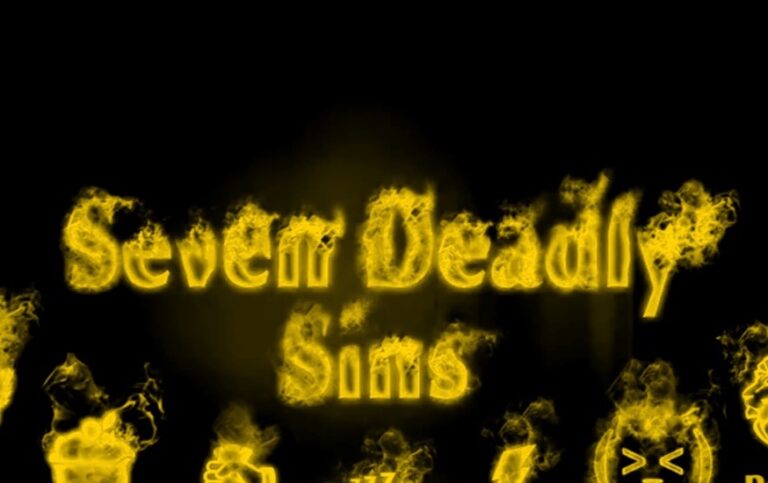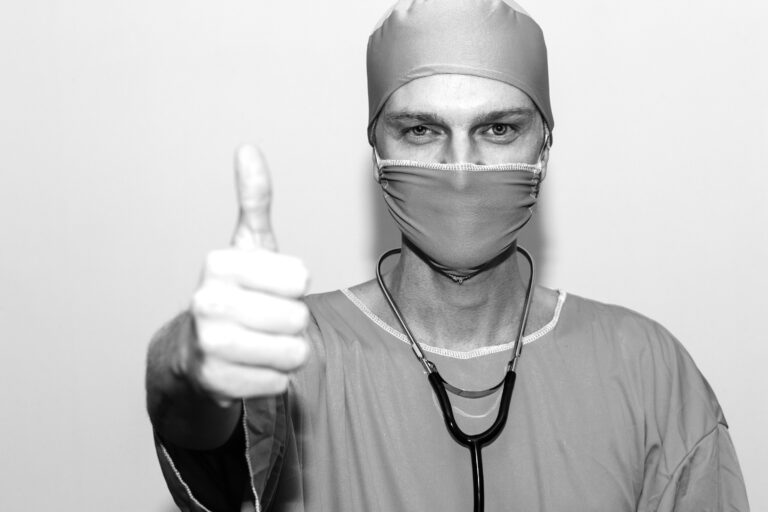Sepsis and Scapegoating in Lucy Letby Case
One fabulous article on scienceLucyLetby subreddit about sepsis and a snippet of trial testimony that might explain why Lucy was scapegoated
Below is a snippet of the testimony on 26 April of CoCH neonatal unit manager Eirian Lloyd Powell.
“Ms Powell said Letby made mistakes, as everyone did, but was “good at reporting mistakes”, and would report mistakes that other nurse practitioners or medical staff had made, regardless of seniority.”
26 April 2023 (http://www.chesterstandard.co.uk/news/23484044.recap-lucy-letby-trial-thursday-april-27/)
We have five useful bits of information here:
- We know that Lucy was “good at reporting mistakes”.
- We know she had no qualms about reporting senior doctors.
- Given that Powell specifically mentioned that Lucy would “report mistakes, regardless of seniority, I think we can infer that this may have been unusual and that other nurses feared the consequences of reporting senior doctors (after all, this would make sense).
- If Lucy made reports, these should be in the hospital’s computer system.
- When Powell made this comment she was being questioned by prosecution barrister Nicholas Johnson KC. He would not have wanted the Court to hear that Lucy reported senior doctors. So, I think we can infer that Powell went out of her way to make this remark and that therefore she was a supporter of Lucy (did not believe she was a killer).
If it was indeed usual for nurses to not report senior doctors, I wonder how the likes of Drs Gibbs, Brearey and Jayaram felt when Lucy reported them as she probably did.
The below article (https://www.reddit.com/r/scienceLucyLetby/comments/16cga3g/i_found_a_confirmed_case_of_a_newborn_developing/) was posted on the scienceLucyLetby subreddit (https://www.reddit.com/r/scienceLucyLetby/) yesterday. It is brilliant research. Thank you Nessie In The Loch (https://www.reddit.com/user/nessieintheloch/) for doing such fabulous work and for letting me reproduce it on this site.
I found a confirmed case of a newborn developing sepsis at the Countess of Chester neonatal unit in June 2015—the same month babies A, C and D died, and baby B had an ‘unexpected collapse.’ In fact, this confirmed case of sepsis likely overlapped with the events related to babies A-C.
First, some context: In 2013, The Chester Standard teamed up with the Countess of Chester Hospital for a charity campaign dubbed ‘Babygrow Appeal’. The goal was to raise £3 million to build a new neonatal unit for the hospital, to replace the old, cramped one where Lucy Letby supposedly killed and harmed over a dozen infants.
If the name ‘Babygrow Appeal’ sounds familiar, it’s because much has been made in the press about Letby’s involvement with the campaign. Mind you, she was not the only familiar face to take part—Stephen Brearey and John Gibbs did as well—to name just two.
As part of the partnership, The Chester Standard ran weekly stories about parents’ and babies’ experiences at the neonatal unit.
One of those stories highlighted the “emotional rollercoaster” a couple went through when their son, whom I’ll refer to as “James,” was born eight weeks premature. While the article is meant to be a feel-good piece, what it reveals could shed new light on the accusations against Lucy Letby.
June 2015: Sepsis in the Neonatal Unit
Baby James was born on June 6, 2015, eight weeks ahead of his due date. He was taken to the neonatal unit straight away, and placed in intensive care.
He eventually recovered enough to be taken out of intensive care. But his relatively stable condition was short-lived: when James was eight days old, according to his mom, “he became very poorly with septicaemia, and his arms, leg and tummy all swelled up.”
Septicaemia and sepsis are not necessarily synonymous—there are medical distinctions between the two. But when it comes to communicating with laypeople, the NHS uses the terms interchangeably.
Going by his mother’s account, James’s septicaemia diagnosis came on or around June 14, 2015. In short order, he was transferred to Liverpool Women’s Hospital—where, according to his mom, “he recovered quite quickly.”
After a four-day stay at the hospital in Liverpool, James was transferred back to the Countess of Chester. There, he began to deteriorate again. In his mother’s words,
Just as things started to look up, a lump appeared on James’s chest which got bigger and turned out to be an abscess.
The MRI scan showed he also had abscesses on his elbow and ankle as well, and he underwent a bone scan to check on an infection in his hip area. He was taken back to Liverpool Women’s as doctors thought he might need an operation.
In short, a baby boy at the neonatal unit in June 2015 developed an infection so severe that it led to sepsis—possibly twice. The unit, in turn, was so ill-equipped to treat him that it twice had to transfer him to another hospital.
Possible Overlap with Babies A-C
To recap:
- June 6: Baby James is born at the Countess of Chester. He is sent straight away to the neonatal unit, where he initially spends time in the intensive care nursery.
- ~June 14: James is diagnosed with septicaemia. He is transferred to Liverpool Women’s Hospital for emergency treatment.
- ~June 18: James is back at the Countess, where he soon develops a noticeable lump on his chest that turns out to be an abscess. Further scans reveal additional abscesses in his elbow and ankle, and a bone infection in his hip area. His condition is so grave that he is at risk for surgery. He is once again transferred to the hospital in Liverpool.
Compare that to the timeline for babies A to D:
- June 8: Baby A, a boy, dies. The previous evening, he had been given medication for “suspected sepsis.” He was being treated in the intensive care nursery, in a cot right next to that of his twin sister. During this period, it emerged at trial, a third baby had also been staying in the intensive care room, alongside the twins. And while, to my knowledge, the third baby’s identity was not revealed at trial, it could have been James, considering the overlap in dates.
- June 10: Baby B, who is Baby A’s twin sister, collapses but survives. Lucy Letby will later be convicted of trying to murder Baby B on this occasion.
- June 14: Baby C, a boy, dies. A day earlier, his doctor had written “suspected sepsis” under “problems.” He was also being treated for pneumonia. Even prosecution witness Dewi Evans, in a 2019 report, wrote that, “infection may be a significant factor in his collapse.” In an earlier report, from 2017, Evans had written, “One may never know the cause of (his) collapse. He was at great risk of unexpected collapse.”
- June 22: Baby D, a girl, is pronounced dead. A post-mortem examination conducted shortly after her death would identify the cause as “pneumonia with acute lung injury.” Before these results had come in, though, Baby D’s doctors had had no idea she’d even had pneumonia. And though they’d suspected she had had an infection, they had started her on antibiotics a full four hourslater than they should have. The delay had been inexcusable, but was characteristic of the hospital’s sub-optimal standards: A nationwide investigation had revealed the Countess of Chester to have been the fifth worst-performing hospital in the NHS when it came to treating sepsis in a timely manner. The investigation found that only 33% of the hospital’s patients who needed treatment for sepsis were given antibiotics within the appropriate timeframe.
Conclusion
The deaths of three babies and collapse of a fourth in a single month—June 2015—caught the attention of Stephen Brearey, the lead consultant in the neonatal unit at the Countess of Chester Hospital. After ascertaining that Lucy Letby had been on shift for the four events, he began to suspect her of murder.
But there could have been a simpler explanation: babies in the neonatal unit during the month of June 2015 could have been at an especially high risk of serious infection—a risk that could have been exacerbated by the cramped premises. The unit, in turn, had been demonstrably ill-equipped to provide these newsborns with the care they needed.
It’s a hypothesis that should not have seemed so outlandish to Brearey himself. When profiled by The Chester Standard in 2013, as part of the Babygrow Appeal charity drive, Brearey gave the following explanation for why the hospital was in dire need of a new neonatal unit:
The nurses on the unit do wonderful work and are very professional despite the lack of space around the incubators. Neonatal intensive care has improved in recent years but requires more equipment which we have very little space for. In addition, the risks of infection for the babies is greater, the closer they are to each other.
Update
The baby whom I’ve been referring to as “James,” as well as his mother, were pictured with none other than Lucy Letby—as well as John Gibbs—in a Chester Standard article published on August 6, 2015.
A quick closing note, and something for all of us (myself included) to keep in mind: While I strongly believe that the details of this baby’s experience in the neonatal unit provides important context to the accusations against Lucy Letby, the family featured in these articles deserves privacy. I’ve tried to shield them by referring to the baby with a pseudonym, though I realize it’s not enough to anonymize them completely. Let’s just all remember that the family itself has nothing to answer for—and, though unlikely, may not even realize their experience is relevant to the Lucy Letby case in any way.
Oct 26, 2023
Yes, once again, we are drawn to SEPSIS – not Lucy, as the “Villain of the piece”…….Baby G’s case also lends further credence to this……..possibly, but not 100% sure of this one – Baby B’s case, which eerily presented very similar symptoms as those demonstrated in Baby G”s case.
Very significant that, in all of the 4 or so Babies who had Sepsis and / or possible Pneumonia in their respective Diagnoses = and Baby G should be included if not mentioned in this context = Lucy was implicated, and accused, of causing (very wrongly) their deaths and / or Medical complications that ensued from Sepsis primarily.
LikeReply
Oct 04, 2023
The trolley problem is a famous ethical dilemma. An out-of-control train/trolley is rolling down a track towards 5 unaware workmen. You can save them by switching the track so that the trolley kills one person on the other track instead. There are many variations to the trolley problem, but the basic question is: Should you save someone by murdering someone else? What is the greater good? Should you get involved? It could be that Lucy is being scapegoated in order to save millions of pounds for the NHS. It’s a shame that one innocent nurse spends the rest of her life in jail, but would it be worse if she was not guilty and the NHS had to pay for CoCH failings? Some healthy people died (for any reason, within 28 days) of coronavirus vaccination, who probably would have survived coronavirus. But their sacrifice meant that unhealthy people were saved from coronavirus. What is the greater good, and to what end should we pursue it. Is it okay for one innocent nurse to go to jail forever if it saves the NHS a significant sum of money, which it can use to save lives?Show Less
LikeReply1 Like

Oct 05, 2023
Replying toThomas Alsop
As you say, there are big ethical questions. I suppose some might argues that the blame being put on Lucy means there is less pressure on NHS to implement change which means lives will continue to be lost unnecessarily.
LikeReply
Oct 05, 2023
Replying toPeter Elston
Is there a disparity in compensation pay-outs for the parents, depending on whether their children were murdered by a nurse, or died/injured due to hospital negligence?
LikeReply

Oct 11, 2023
Replying toThomas Alsop
I don’t know but it is a good question. Will ask the same question on the forum.
LikeReply

Sep 09, 2023
Lots of people on various internet forums predictably following the lead of the press in agreeing what a disgrace it is that the NHS tried to silence those who were trying to whistle-blow on Lucy Letby. It does not seem to have occurred to these people that there seems good evidence to suggest that Letby herself might well have been the whistleblower here.
Well my God, haven’t they silenced her.
LikeReply
A
X8 Likes
Sep 09, 2023
Replying toFather Hernandez
I agree, after doing training in Liverpool Womens Hospital, whose neonatal unit is described as a centre of excellence. She came into a chaotic, understaffed unit, with poor practices, this was concerning for Lucy, and she voiced her concerns, to colleagues and then managers, this is clear from her statement “Chest drains in Liverpool were sewn in, but no-one at Chester seemed familiar “.
They have turned those concerns full circle onto her.
LikeReply
A
X7 Likes
Sep 10, 2023
Replying tomargaret_222
I think the two of you are spot on. She was saying out loud what others didn’t dare and just put up with. She was a liability. She had to go. As a young nurse, she didn’t stand a chance. My hope is that some real life Atticus Finch, some fearless defence barrister (Mark McDonald?) will fight for this kind and courageous young woman. Lucy the Wistleblower.
LikeReply
G3 Likes
Sep 15, 2023
Replying toFather Hernandez
Sadly yes – But they havent Silenced us.
I have sent the following article anonymously to every media UK outlet I can find and titled the mail Real Journalism ..
Pleased to add I’ve seen this article now twice on different media websites.
What doesn’t help though is that whilst I appreciate there could be something in it concerning the conspiracy theories for the covid vaccine. Those that have pushed that are also pushing Lucy innocence, so the general public (in my opinion) create more disbelief of what’s presented for Lucy because they just say “oh your the conspiracy guys for Covid and I don’t think that helps.
As its now around the date when we should be hearing something about an appeal, I’m 🙏🏻 we do here something either today 15/09 or by Monday 18/09. Show Less
LikeReply
Sep 08, 2023
Another fantastic piece of work Peter, not sure how you find the time. Once this is over I’m taking investment advice ftom you.
Given that we are more and more talking about infections has anyone looked at data for infections on other wards within the hospital. Im no medic or scientist, I’m a lowly builder. But just like stats have connections so do drains.
LikeReply
G7 Likes
Sep 08, 2023
Replying toowend67
It’s unlikely that the hospital kept accurate records of infections on other wards in 2015/16, seeing as they couldn’t even keep accurate records of deaths. The freedom of information request for the neonatal ward lists no neonatal or post-neonatal deaths in either August 2015 or October 2015, when Lucy allegedly murdered two of her victims.
LikeReply
Sep 08, 2023
Replying toThomas Alsop
But it would have kept records of deaths where infection was a contributing factor.
LikeReply

Sep 08, 2023
Replying toowend67
I think it also depends what viruses they were testing for. If they weren’t testing for the right virus there would not be a record of viral sepsis. Then after a few babies had died they realised they should have tested for certain viruses. This fits the facts (the odd rashes, odd as in they hadn’t seen it before, etc).
LikeReply
G
3 Likes
Sep 08, 2023
Replying toPeter Elston
That’s a good point Peter, amongst many of your good points ( not to blow smoke up your arse). Without your blog many of us would be lost and frustrated and for that you have my gratitude.
I would say that I very much doubt a single person on here understands drainage and how poor it is in the UK. In other countries its a qualification, here its left to the apprentice ( I know, I spent many months literally in the shit as a young guy). If you spent a week on site you would be amazed that a single toilet flushes without incident. Indeed on many sites they don’t.
So in the absence of any other skill Im going to contact “the plumber”. Ive read that they will not comment or converse (maybe to another thick builder they might). The plumber which in reality is a medium sized contractor was and is derided in the press but lets not forget the only one willing to stick their neck out for Lucy.Show Less
LikeReply
G
A6 Likes
Sep 09, 2023
Replying toowend67
Thank you, Owend67. You are right: same as we enjoy our food but don’t really want to know where it comes from, when we flush the toilet we’d rather not think about where it all goes. Best to leave it to the Sewage Fairies. Your comments show if proof was needed that we all have something to contribute to Lucy’s cause. It is the input of people from all walks of life that give this forum its strength and ultimately its credibility.
LikeReply
O
G3 Likes
Sep 08, 2023
Child A.
If we were to assume it was not sepsis (there was a blood expert report, which does not appear to be public) does that implicate LL who happened to be on shift when a procedure was performed?
Is it possible the air embolism event, if that is what happened, was simply a medical accident?
For example : https://nursing.ceconnection.com/ovidfiles/00129804-201211000-00007.pdf
Extract:
The unintended intravenous infusion of small volumes of air is common in clinical practice. International Electrotechnical Commission guidelines for infusion pumps permit infusion of up to 1 mL in 15 minutes and discount bubbles smaller than 50 µL. A review of the literature, however, suggests that these limits may be too generous. Neonates and patients with right-to-left cardiac shunts (eg, patent foramen ovale [PFO]) are at risk from lower volumes.
——————————–
The jury are decision makers, but decision makers can only operate and weigh up relative likelihoods if fully informed.
Other children, although it is rare, do appear to have been killed by accidental air embolism events.Show Less
LikeReply2 Likes
Sep 08, 2023
Replying toSF
I honestly struggle to see how this case ever passed the evidential threshold.
How can anyone really be certain what happened, or who, if anyone, was responsible for it.
I think this is the paper referred to in the evidence:
It was two and half years later that the evidence of skin discoloration matching the 1989 paper appeared.
============
Quote from( https://www.reddit.com/r/lucyletby/wiki/index/childa/prosecutionwitnesses/#wiki_dr._sally_kinsey.2C_blood_expert )
Mr Myers says Dr Jayaram’s clinical note – ‘legs noted to look very white and pale before cardiac arrest’ does not contain the full details from her report. Dr Jayaram did not add anything further to the skin discolouration observation in the report to the coroner, Mr Myers adds.
Mr Myers: “The description you read came…
Show More
LikeReply
2 Likes
Sep 08, 2023
Before I concluded that I believed LL to be innocent I researched everything I could find about her as a person – her behaviour, her character, her relationships with everyone where possible. I do this for anyone I find interesting, it’s a by-product of my work within psychology. What is a stand-out characteristic is that she seems conscientious, a high-achiever (genuinely a very kind individual). Not only does this not equate with her alleged crimes but it also fits in with a possible alternative reason when there is a negative reaction to her behaviour. If you keep this mind when thinking it all over you might see it also.
LikeReply
11 Likes
Sep 08, 2023
Replying togillgage
I already have. When she presented her defence and talked about the different cases in a competent, articulated manner, this too was turned against her, perceived as proof of her arrogance and possibly narcissism. Everything that is good about Lucy is skillfully twisted. This in my opinion, amounts to a constructive destruction of her persona, to use an oxymoron.
LikeReply
S
T13 Likes
Sep 08, 2023
Replying toViviane
Yes, everything she does can be interpreted as extra vigilant. It just makes it worse, if possible.
LikeReply
C6 Likes
Sep 08, 2023
Replying toViviane
negativity bias
LikeReply
C3 Likes
Sep 08, 2023
Replying toViviane
This is replying to both Viviane and GillGage. Something that has helped me make sense of this fiasco of a case is a couple of essays I read online a few years ago written by a film and literary critic, Dennis Grunes. They made a huge impression on me at the time, and I recently looked them up again after learning about Lucy Letby, because they deeply explore the phenomenon of scapegoating and “moral straitjacketing,” in literature and in life.
Grunes writes about HAMLET in one essay, and about Herman Melville’s classic novella BILLY BUDD in the other. He argues persuasively that these two literary classics have been almost universally misunderstood, that both works are actually about scapegoating and, more precisely, how we as human beings can sometimes hallucinate and project “evil” and sinister, homicidal intentions onto a specific person where none exist.
I would recommend both pieces as well worth reading. They address something that is hard to understand: there doesn’t have to be a conscious and intentional conspiracy against a particular person for them to become the focus of all the negative feelings of a crusader — or several crusaders — against “evil.” When someone is convinced he has discovered an evil monster, every piece of evidence will then get shoved, jammed, and shoehorned into his pre-existing moral scheme.
The BILLY BUDD essay:
The HAMLET essay:
https://grunes.wordpress.com/2008/10/13/hamlet-laurence-olivier-1948/Show Less
LikeReply

G4 Likes
Sep 10, 2023
Replying toChristopher
I seem to remember that the term scapegoating was initially coined to describe the actions of the tribe against an individual who is cast out and is then an outsider, marking the one from the other in representation. (There’s a famous painting by William Holman Hunt which depicts the “scapegoat” described in the Book of Leviticus.)
The modern individual now has to deal with ‘negativity ‘bias’ from anyone with that psychological leaning as being a mere outsider is now quite common.
LikeReply1 Like
Sep 11, 2023
Replying toChristopher
This is good reading, Christopher. And doesn’t it make sense that at this time in our society we should feel in desperate need of a dumping ground/person for all the ways we feel let down by the NHS. Call it collective unconscious bias as well as scapegoating.
Here is a long but interesting section on Wiki:
Scapegoat mechanism
Literary critic and philosopher Kenneth Burke first coined and described the expression scapegoat mechanism in his books Permanence and Change (1935),[15] and A Grammar of Motives (1945).[16] These works influenced some philosophical anthropologists, such as Ernest Becker and René Girard.
Girard developed the concept much more extensively as an interpretation of human culture. In Girard’s view, it is humankind, not God, who has need for various forms of atoning violence. Humans are driven by desire for that which another has or wants (mimetic desire). This causes a triangulation of desire and results in conflict between the desiring parties. This mimetic contagion increases to a point where society is at risk; it is at this point that the scapegoat mechanism[17] is triggered. This is the point where one person is singled out as the cause of the trouble and is expelled or killed by the group. This person is the scapegoat. Social order is restored as people are contented that they have solved the cause of their problems by removing the scapegoated individual, and the cycle begins again. The keyword here is “content”.
Scapegoating serves as a psychological relief for a group of people. Girard contends that this is what happened in the narrative of Jesus of Nazareth, the central figure in Christianity. The difference between the scapegoating of Jesus and others, Girard believes, is that in the resurrection of Jesus from the dead, he is shown to be an innocent victim; humanity is thus made aware of its violent tendencies and the cycle is broken. Thus Girard’s work is significant as a reconstruction of the Christus Victor atonement theory.Show Less
LikeReply
Oct 26, 2023
Replying toViviane
You are so right……have that rare quality (along with others supporting this maligned person = Lucy), of being able to see far beyond what, sadly, so many are unable to…..please keep that thought as you compile and place your great Posts.
We WILL win the day for Lucy………convinced of that. Rock solid in my belief.
LikeReply
Oct 26, 2023
Replying togillgage
Yes, absolutely…….Lucy was / is that rare person……above the average (even above Doctors / Consultants)….able to perceive what others cannot, or will not……and HOW she has been vilified and torn down for her gift (for i believe Lucy has this rarest of gifts).
LikeReply
Sep 08, 2023
Mark Mayes’ comments on The Twilight Zone for LL five days ago echo your take on her scapegoating which make sense. The doctors couldn’t have taken kindly to have their competence questioned by a mere nurse. To have been asked to apologise to Lucy for making such serious accusations by her father, then by management, added insult to injury. Her scapegoating would enable two things: cover their backs by explaining away the rise in deaths; get rid of a know-it -all nurse too cocky for their own liking. Killing two birds in one stone.
LikeReply
S
G15 Likes
Sep 15, 2023
Replying toViviane
Scapegoating is as much if not more an unconscious reaction as it makes people feel better.
LikeReply
1 Like
Sep 15, 2023
Replying toViviane
I think the doctors were not scapegoating as much as responding to an affront, plain and simple. What followed was the effect of this when all the other parties joined in one by one. This then becomes what we call scapegoating: when one person is made the target for the sins of the tribe/society. This is healing for the group. If you find this fits with your understanding, we then have to reflect on what it was in Lucy’s character that made her a target, how did she allow this to happen – again unconsciously? Did she always fear that one day she would be found not to be good enough? It is the other end of the stick to ‘high-achiever’. Do all our traits exist due to the force or possibility of their opposite?Show Less
LikeReply
Oct 26, 2023
Replying toViviane
Having just seen the Picture of Lucy together with Dr.John Gibbs, and others in the Fund Raising Article concerning the new Neo – Natal Unit, (and drawing on your comments about about Lucy upsetting Senior Colleagues at the C of CH Hospital), i am ever more convinced of Lucy’s total Innocence – however trite that may across as.
Put simply, i completely believe that Lucy tried her very Best as a Conscientious and Dedicated Nurse…….and she was pilloried for that.
When i was in work, sometimes i went round and re – did other Staff members’ work….was told not to come in early to work……was told not to go and talk to Patients when i arrived early and before Handover began….a bit of a “loose cannon, in fact.” They even tried to get me off Night Duty ( i had done years on Days)…….because i liked to do things properly ( in my eyes). My Line Manager stuck up for me and i was able to go to Retirement from night duty. They definitely had their “favourites”……..so, i can 110% RELATE to Lucy and why other staff may have resented her, because she had a Passion for wanting things done PROPERLY……again, from her perspective…….and even if it meant Reporting other, more Senior, members of Staff.
It is like Lucy had that very rare ability to see beyond her years, like a Premonition that she knew when mistakes by others had been made…..and was not afraid of the consequences….which, sadly, as we know, led to accusations of her causing Baby deaths.
I wish more people could see this truth about Lucy……it has shouted out at me from Day 1. When you are unusual, prepared to be seen as better than your Peers…….as you so rightly said in your Post, Viviane – and as i have said in my Posts elsewhere…..you have a massive Target on your back – you put yourself in the Firing Line…….and HOW, in poor Lucy’s case.
I SO admire her for her sheer bravery and “balls” in standing up for what she believed in and not being afraid to do so. I only wish there were more like her….God bless you, dear Lucy..😊Show Less
LikeReply
1 Like
Oct 26, 2023
Replying toChristopher Lloyd
….and Lucy herself OWNED up to mistakes SHE had made…..cf. sometimes not writing things down, for example……..so, we see that Lucy was not so “high and mighty” that she could not “see the Mote in her own eye”. Some label Lucy as being “narcissistic”…..my understanding here is that means “self love”……if that includes belief in yourself, and it comes across to others as arrogance, and total belief that only you are right, then that, in MHO explains all as to why Lucy has taken so much flak.
For me, she is probably one of the most genuine human beings – and i am heartened to know others here agree. We WILL win the day for you, Lucy, by all of our concerted efforts on your behalf.Show Less
LikeReply
Oct 26, 2023
Replying toChristopher Lloyd
It does seem that all she did wrong was work her socks off- ‘No good deed goes unpunished ‘….
LikeReply

Sep 08, 2023
Ah, but it wasn’t any ward or any hospital. It was CoCH’s neonatal unit which received damning reports from the RCPCH and CQC in 2015/16 about poor medical practices, short staffing etc. It even received a daming report from the CQC six years after Lucy was taken off the ward (“Countess of Chester Hospital maternity services unsafe” https://www.bbc.co.uk/news/uk-england-merseyside-61808681, 15 June 2022). And in 2013, Brearey himself said that the unit required more equipment “which we have very little space for. In addition, the risks of infection for the babies is greater, the closer they are to each other”. Anyway, I agree it wasn’t a smoking gun, just another piece of evidence supportive of the case for there having been a viable alternative suspect (virus).
As for reporting, I think you’re suggesting the consultants might not have known about Lucy having reported them. I suppose that is possible but I would have thought it is worth investigating, to see if they were logged (though I understand computer logs can and do ‘go missing’).Show Less
LikeReply
5 Likes
Sep 15, 2023
Replying toPeter Elston
The report from June 2022 should have been exculpatory for the defence, surely? We now see how very important all evidence like this ranks.
LikeReply
© Chimp Investor Ltd







